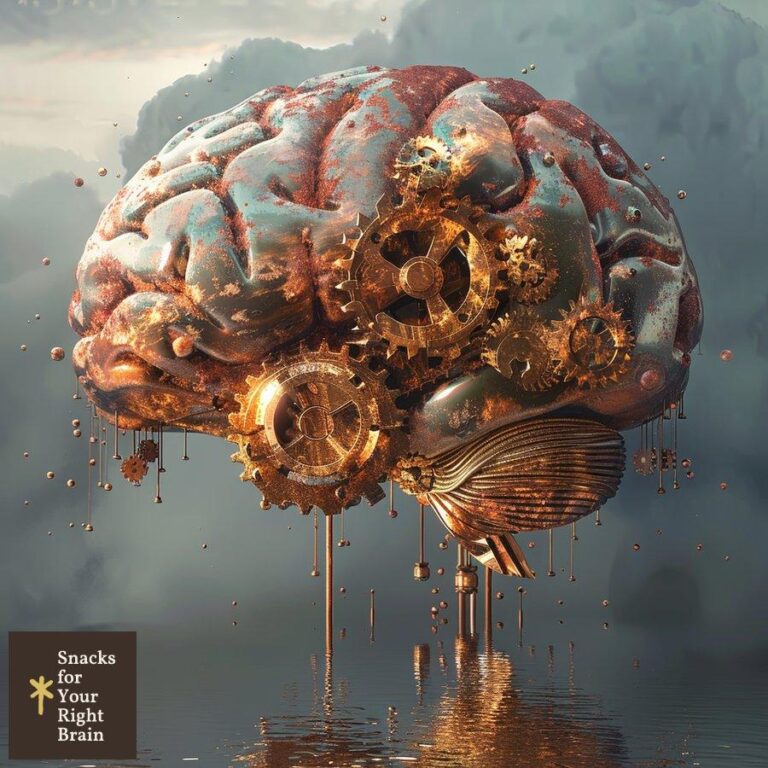What Tense Should Be Used in Short Story
Why is tense important in short stories?
Tense plays a crucial role in short story writing, shaping the reader’s experience and the narrative’s overall impact. The choice of tense influences how readers perceive time, events, and characters within the story. It affects the story’s pacing, immediacy, and emotional resonance.
Tense selection in short fiction serves several essential functions:
Establishing temporal context: The tense sets the temporal framework for the narrative, indicating whether events are occurring in the past, present, or future. This context helps readers orient themselves within the story’s timeline and understand the sequence of events.
Creating atmosphere: Different tenses can evoke distinct moods and atmospheres. Past tense often lends itself to a reflective or nostalgic tone, while present tense can create a sense of urgency or immediacy.
Controlling narrative distance: Tense choice affects the perceived distance between the reader and the story’s events. Past tense typically provides a sense of distance, allowing for reflection and analysis, while present tense can make readers feel as if they’re experiencing events alongside the characters.
Influencing pacing: The tense used can impact the story’s pacing. Present tense often creates a faster, more dynamic feel, while past tense can allow for a more measured, deliberate pace.
Shaping character perspective: Tense selection can influence how readers perceive and connect with characters. Present tense may offer a more intimate, immediate connection to characters’ thoughts and experiences, while past tense can provide a broader perspective on character development.
Enhancing thematic elements: The chosen tense can reinforce or complement the story’s themes. For instance, a story exploring memory and nostalgia might benefit from past tense, while a tale focused on immediacy and urgency might be more effective in present tense.
Facilitating narrative techniques: Certain narrative techniques, such as flashbacks or foreshadowing, may be more easily implemented or more effective with specific tense choices.
Understanding the importance of tense in short story writing empowers authors to make informed decisions that enhance their storytelling. By carefully considering tense selection, writers can craft more engaging, impactful narratives that resonate with readers on multiple levels.
How does past tense enhance storytelling in short fiction?

Past tense is a popular choice for short story writers, offering several advantages that can enhance storytelling in short fiction. This tense allows authors to craft narratives with a sense of completion, reflection, and historical context, providing a rich foundation for character development and plot progression.
Narrative distance and perspective
Past tense creates a natural distance between the narrator and the events being described. This distance can be advantageous in several ways:
Reflection and analysis: The narrator can provide insights and reflections on past events, offering a deeper understanding of their significance.
Character growth: Authors can more easily show character development over time, as the narrator has the benefit of hindsight.
Foreshadowing: Past tense allows for subtle hints about future events without disrupting the narrative flow.
Reliability: A past tense narrator may be perceived as more reliable, having had time to process and understand the events they’re recounting.
Flexibility in time management
Past tense offers writers greater flexibility in managing time within the narrative:
Time jumps: Authors can easily move between different points in time without confusing the reader.
Flashbacks and flash-forwards: These narrative techniques are more naturally integrated into past tense stories.
Pacing control: Writers can slow down or speed up the narrative as needed, focusing on crucial moments or summarizing less important periods.
Cultural familiarity and reader comfort
Many readers are accustomed to stories told in past tense, which can contribute to their engagement:
Ease of comprehension: Past tense aligns with how we often recount real-life experiences, making it intuitive for readers to follow.
Genre expectations: Certain genres, such as historical fiction or mystery, often benefit from the use of past tense.
Emotional distance: For stories dealing with intense or traumatic events, past tense can provide a buffer that allows readers to engage with difficult material more comfortably.
Narrative authority and credibility
Past tense can lend a sense of authority to the narrative voice:
Omniscient narration: Past tense naturally supports an omniscient narrator who knows the full scope of events.
Historical context: For stories set in specific historical periods, past tense can reinforce the authenticity of the narrative.
Conclusiveness: The use of past tense implies that the story has reached its conclusion, potentially adding weight to the narrative’s themes or messages.
To illustrate the effectiveness of past tense in short fiction, consider this comparison of tense usage in storytelling:
| Aspect | Past Tense | Present Tense |
|---|---|---|
| Narrative Distance | Greater distance, allows for reflection | Immediate, in-the-moment experience |
| Time Management | Flexible, easily accommodates time jumps | Linear, focuses on immediate action |
| Reader Familiarity | High, aligns with traditional storytelling | Moderate, can feel more experimental |
| Emotional Impact | Can provide a buffer for intense events | May create a more visceral, immediate response |
| Character Development | Easily shows growth over time | Focuses on immediate thoughts and actions |
Past tense enhances storytelling in short fiction by providing authors with a versatile tool for crafting engaging narratives. Its ability to create narrative distance, manage time flexibly, align with reader expectations, and lend authority to the narrative voice makes it a powerful choice for many short story writers. By leveraging these advantages, authors can create rich, multi-layered stories that resonate with readers long after the final page.
What are the advantages of using present tense in short stories?
Present tense offers unique advantages in short story writing, creating an immediate and engaging reading experience. This tense choice can bring a sense of urgency and intimacy to the narrative, making it particularly effective for certain types of stories and storytelling styles.

Immediacy and urgency
Present tense creates a sense of events unfolding in real-time, which can have several benefits:
Heightened tension: Readers experience events as they happen, potentially increasing suspense and excitement.
Vivid imagery: The immediacy of present tense can make descriptive passages feel more vivid and alive.
Emotional intensity: Characters’ thoughts and feelings may feel more immediate and impactful when presented in the present tense.
Reader engagement: The sense of being “in the moment” can draw readers more deeply into the story world.
Narrative intimacy
Present tense can foster a closer connection between the reader and the story:
Character perspective: Readers may feel more directly connected to characters’ thoughts and experiences.
Reduced narrative distance: The gap between the narrator and the events being described is minimized, potentially increasing reader immersion.
Stream of consciousness: Present tense lends itself well to stream-of-consciousness narration, allowing for a more direct representation of characters’ thoughts.
Cinematic quality
The use of present tense can create a cinematic feel in short stories:
Visual storytelling: Present tense can make scenes feel more visual, as if unfolding before the reader’s eyes.
Pacing control: Authors can create a sense of real-time pacing, similar to film or television narratives.
Scene-setting: Descriptive passages in present tense can feel more immediate and vivid, enhancing the story’s atmosphere.
Temporal flexibility
While often associated with linear narratives, present tense can offer unique temporal advantages:
Timelessness: Stories in present tense can feel less anchored to a specific time, potentially giving them a more universal quality.
Blending of time periods: Authors can more easily shift between past, present, and future within a present tense framework.
Emphasis on the now: Present tense naturally focuses attention on the immediate moment, which can be powerful for stories exploring themes of presence or mindfulness.
Stylistic distinctiveness
Present tense can set a story apart and serve specific narrative purposes:
Experimental feel: The use of present tense can give a story a more contemporary or experimental flavor.
Genre subversion: In genres traditionally associated with past tense, present tense can create a fresh, unexpected reading experience.
Thematic reinforcement: For stories dealing with themes of immediacy, uncertainty, or the present moment, the tense choice can reinforce these ideas.
To illustrate the impact of present tense on various aspects of storytelling, consider this comparison:
| Storytelling Aspect | Effect of Present Tense |
|---|---|
| Pacing | Often feels faster, more immediate |
| Character Development | Focuses on immediate thoughts and actions |
| Reader Immersion | Can create a stronger sense of “being there” |
| Narrative Voice | Often feels more intimate and immediate |
| Descriptive Passages | Can feel more vivid and immediate |
| Temporal Flexibility | Allows for a focus on the “now” while still accommodating other time periods |
Present tense offers distinct advantages in short story writing, particularly in creating a sense of immediacy, fostering reader engagement, and providing a unique narrative voice. Its ability to create tension, intimacy, and a cinematic quality can make it a powerful tool for certain types of stories. By understanding and leveraging these advantages, authors can craft compelling short fiction that captivates readers and leaves a lasting impression.
When should you mix tenses in a short story?


Mixing tenses in a short story can be a powerful narrative technique when used purposefully and skillfully. While consistency in tense is generally advised, there are specific situations where tense mixing can enhance the storytelling experience. Understanding when and how to mix tenses effectively can add depth and nuance to your short fiction.
Flashbacks and memories
One of the most common and effective uses of tense mixing involves flashbacks or character memories:
Main narrative in past tense: The primary story events are typically narrated in past tense.
Flashback in past perfect: When introducing a flashback, use past perfect tense to indicate an event that occurred before the main narrative.
Transition to simple past: As the flashback continues, shift to simple past tense for smoother reading.
Example:
“Sarah walked into her childhood home. She had spent (past perfect) countless summers here, running through the fields and climbing trees. One particular day stood out (transition to simple past). She was ten years old, and the air smelled of freshly cut grass…”
Present-tense framing device
Some stories use a present-tense frame to introduce a past-tense narrative:
Opening and closing in present: The story begins and ends in the present, often with a character reflecting on past events.
Main story in past tense: The bulk of the narrative is told in past tense, recounting the events that led to the present situation.
This technique can create a sense of reflection and provide context for the main narrative.
Emphasizing important moments
Shifting to present tense for key moments in a past-tense narrative can create emphasis:
Heightened emotion: Use present tense to highlight particularly emotional or impactful scenes.
Vivid descriptions: Shift to present tense for especially vivid or important descriptive passages.
Climactic events: Present tense can make climactic moments feel more immediate and intense.
This technique should be used sparingly to maintain its impact.
Dual timelines
Stories that feature two or more distinct timelines may use different tenses to differentiate between them:
Past timeline: Often narrated in past tense.
Present or future timeline: May be narrated in present tense to create contrast.
This approach can help readers easily distinguish between different time periods within the story.
Stream of consciousness
When representing a character’s thoughts or internal monologue:
Main narrative: Typically in past tense.
Internal thoughts: Often presented in present tense to create immediacy.
This technique can provide insight into a character’s immediate thoughts and feelings.
Prophetic or visionary elements
For stories involving prophecies, visions, or future events:
Main narrative: Usually in past or present tense.
Prophetic elements: May use future tense or present tense with future implications.
This can create a sense of destiny or inevitability within the narrative.
To illustrate when and how tenses might be mixed in a short story, consider this table:
| Narrative Element | Primary Tense | Secondary Tense | Purpose |
|---|---|---|---|
| Main storyline | Past | – | Establish the primary narrative |
| Flashbacks | Past perfect | Simple past | Indicate events prior to the main narrative |
| Character thoughts | Past | Present | Create immediacy in internal monologue |
| Climactic moments | Past | Present | Emphasize key events |
| Framing device | Present | Past | Provide context and reflection |
| Prophecies/Visions | Past/Present | Future | Introduce elements of destiny or foreshadowing |
When mixing tenses, it’s crucial to maintain clarity and avoid confusing the reader. Each tense shift should serve a specific purpose and enhance the story rather than distract from it. Some key considerations when mixing tenses include:
Consistency within sections: Maintain consistent tense within each distinct section or time period of the story.
Clear transitions: When shifting tenses, provide clear contextual cues to guide the reader.
Purposeful use: Ensure each tense shift serves a specific narrative purpose.
Reader comprehension: Always prioritize clarity and readability over stylistic choices.
By carefully considering when and how to mix tenses, authors can add depth, emphasis, and nuance to their short stories. This technique, when used judiciously, can enhance the reading experience and create more engaging and memorable narratives.
How do you choose the right tense for your short story?
Selecting the appropriate tense for your short story is a crucial decision that can significantly impact the narrative’s effectiveness. The right tense choice can enhance your storytelling, while the wrong one might detract from the reader’s experience. To make an informed decision, consider the following factors and strategies:
Story content and theme

The nature of your story and its central themes can guide your tense selection:
Historical narratives: Past tense often works well for stories set in specific historical periods.
Timeless themes: Present tense can lend a sense of universality to stories exploring enduring human experiences.
Future-oriented stories: Consider present or future tense for narratives focused on upcoming events or speculative scenarios.
Narrative perspective
The point of view from which you’re telling the story can influence tense choice:
First-person narration: Can work well in either past or present tense, depending on whether the narrator is recounting past events or describing ongoing experiences.
Third-person limited: Often uses past tense, but present tense can create a sense of immediacy.
Omniscient narration: Typically employs past tense, allowing for a broader perspective on events.
Desired emotional impact
Different tenses can evoke distinct emotional responses:
Reflective tone: Past tense can create a sense of nostalgia or reflection.
Urgency and tension: Present tense often heightens suspense and creates a feeling of immediacy.
Prophetic or fatalistic mood: Future tense or a mix of tenses can convey a sense of destiny or inevitable outcomes.
Genre conventions
While not binding, genre expectations can inform your tense choice:
Literary fiction: Often employs past tense, but present tense is increasingly common.
Thrillers and suspense: May benefit from present tense to increase tension.
Science fiction: Can use various tenses depending on the story’s temporal focus.
Narrative techniques
Consider which narrative techniques you plan to use:
Flashbacks: Past tense often works well for stories incorporating numerous flashbacks.
Stream of consciousness: Present tense can effectively convey immediate thoughts and perceptions.
Parallel timelines: May require a mix of tenses to differentiate between time periods.
Reader engagement
Think about how you want readers to connect with your story:
Immersive experience: Present tense can create a sense of “being there” for readers.
Analytical distance: Past tense allows readers to reflect on events alongside the narrator.
Experimental feel: Unconventional tense usage can make your story feel fresh and unique.
To help visualize how different factors might influence tense choice, consider this decision matrix:
| Story Element | Past Tense | Present Tense | Mixed Tenses |
|---|---|---|---|
| Historical setting | Highly suitable | Can work, but less common | Possible for complex narratives |
| Contemporary setting | Suitable | Highly suitable | Possible for layered storytelling |
| First-person narration | Suitable for reflection | Creates immediacy | Can work for complex narratives |
| Third-person narration | Traditional choice | Creates cinematic feel | Possible, but challenging |
| Flashback-heavy plot | Highly suitable | Can be challenging | Often necessary |
| Linear narrative | Suitable | Suitable | Less common |
| Emphasis on character growth | Highly suitable | Can be challenging | Possible for showing different stages |
| Focus on immediate experiences | Can work | Highly suitable | Possible for contrasting time periods |
When making your final decision,Practical strategies for choosing tense
To make the best tense choice for your short story, consider these practical steps:
Write sample passages: Draft the opening paragraph or a key scene in both past and present tense. Compare the impact and feel of each version.
Consider your comfort level: Choose a tense you’re comfortable writing in, as this will likely result in more natural, fluid prose.
Seek feedback: Share tense options with trusted readers or fellow writers to gauge their reactions and preferences.
Analyze similar stories: Examine successful short stories in your genre to see which tenses are commonly used and why they work.
Experiment: Don’t be afraid to try different tenses during the drafting process. You may discover that a tense you didn’t initially consider works best for your story.
Remember that while tense choice is important, it’s just one element of your story. The strength of your plot, characters, and overall writing will ultimately determine your story’s success.
What are common tense mistakes in short fiction?

Tense errors can significantly impact the readability and effectiveness of a short story. Recognizing and avoiding these common mistakes will help you create a more polished and engaging narrative. Here are some frequent tense-related issues in short fiction:
Unintentional tense shifts
One of the most common errors is inadvertently switching between tenses:
Inconsistency within paragraphs: Shifting from past to present (or vice versa) without narrative justification.
Dialogue attribution: Using present tense for dialogue tags in a past tense narrative (e.g., “I’m tired,” he says instead of “I’m tired,” he said).
Flashback mismanagement: Failing to properly signal a shift to an earlier time period through tense changes.
Improper use of perfect tenses
Misusing or overusing perfect tenses can lead to confusion:
Overuse of past perfect: Excessive use of “had + verb” constructions can make prose feel clunky and disrupt the narrative flow.
Incorrect sequencing: Failing to use past perfect to indicate events that occurred before the main narrative in a past tense story.
Present perfect confusion: Misusing present perfect (have/has + verb) in past tense narratives.
Tense inconsistency in habitual or universal statements
Maintaining appropriate tense for general truths or habitual actions:
Mixing past and present: Using present tense for universal truths in a past tense narrative without proper context.
Inconsistent handling of character habits: Switching between past and present when describing a character’s regular behaviors.
Misaligned verb forms
Errors in verb conjugation or form:
Irregular verb mistakes: Incorrectly conjugating irregular verbs, especially in past tense.
Mixing simple and progressive forms: Inconsistent use of simple (walked) and progressive (was walking) forms without clear purpose.
Conditional tense errors: Misusing or inconsistently applying conditional structures (would + verb).
Tense disagreement in complex sentences
Failing to maintain tense agreement in multi-clause sentences:
Subordinate clause errors: Using a different tense in subordinate clauses without justification.
Reported speech mistakes: Incorrectly shifting tenses in reported speech or thoughts.
Participial phrase inconsistencies: Misaligning the tense of participial phrases with the main clause.
Unnecessary tense complexity
Overcomplicating the narrative with excessive tense variations:
Overwrought flashbacks: Using overly complex tense structures for simple chronological shifts.
Tense-heavy exposition: Relying too heavily on complex tense constructions to convey background information.
To illustrate how these errors might appear and be corrected, consider this table:
| Error Type | Incorrect Example | Corrected Version |
|---|---|---|
| Unintentional shift | She walked to the store. She buys some milk. | She walked to the store. She bought some milk. |
| Perfect tense misuse | He had gone to the party and had fun. | He went to the party and had fun. |
| Habitual action inconsistency | John always went to the gym. He lifts weights every day. | John always went to the gym. He lifted weights every day. |
| Irregular verb mistake | She drived to work every day. | She drove to work every day. |
| Complex sentence disagreement | Although he studies hard, he failed the exam. | Although he studied hard, he failed the exam. |
Strategies to avoid tense mistakes
To minimize tense errors in your short fiction:
Consistent review: Regularly reread your work, focusing specifically on tense consistency.
Tense outlining: Create an outline noting the intended tense for each section of your story.
Beta readers: Enlist the help of beta readers to catch tense inconsistencies you might miss.
Grammar tools: Use grammar checking software to identify potential tense issues, but always review suggestions critically.
Targeted editing: During the editing process, dedicate a pass specifically to checking and correcting tense usage.
By being aware of these common tense mistakes and actively working to avoid them, you can significantly improve the quality and readability of your short fiction. Remember that while perfect tense usage is important, it should serve the story rather than distract from it. The goal is to create a seamless reading experience where the tense choices enhance rather than hinder the narrative.
How can you practice mastering tense in short story writing?
Mastering tense in short story writing requires deliberate practice and a keen awareness of how tense impacts your narrative. Here are effective strategies and exercises to help you refine your tense usage and become more adept at leveraging tense for storytelling impact:

Tense transformation exercises

Practice rewriting existing stories in different tenses:
Past to present: Take a story written in past tense and rewrite it in present tense, noting how the change affects the narrative feel.
Present to past: Perform the reverse exercise, transforming a present tense story to past tense.
Mixed tense exploration: Experiment with mixing tenses in a single story, focusing on smooth transitions and clear purpose for each shift.
Focused writing prompts
Use prompts designed to challenge your tense skills:
Tense-specific prompts: Write short pieces using prompts that specify a particular tense (e.g., “Write a story entirely in present tense about a surprise party”).
Tense-shifting prompts: Create stories that require deliberate tense shifts (e.g., “Write a story that begins in the present, shifts to the past for the middle section, and returns to the present for the conclusion”).
Genre-based tense practice: Write in genres that typically favor certain tenses, then experiment with using unconventional tense choices for those genres.
Analytical reading
Develop your tense awareness through careful reading:
Tense analysis: Select short stories by accomplished authors and analyze their tense usage, noting how it contributes to the story’s effectiveness.
Comparative reading: Read multiple stories in different tenses, comparing their impact and considering why the authors might have chosen those tenses.
Genre tense study: Examine tense conventions in various genres, identifying patterns and exceptions.
Targeted editing exercises
Hone your editing skills with a focus on tense:
Tense consistency checks: Practice identifying and correcting unintentional tense shifts in your own writing and in provided samples.
Perfect tense refinement: Edit passages to improve the use of perfect tenses, focusing on clarity and avoiding overuse.
Dialogue tense alignment: Practice aligning dialogue tags and surrounding narrative in terms of tense, especially in stories with multiple time periods.
Collaborative tense work
Engage with other writers to improve your tense mastery:
Tense workshops: Participate in or organize writing workshops focused specifically on tense usage in short fiction.
Peer review exchanges: Share your work with other writers, focusing feedback requests on tense-related aspects of your stories.
Group tense challenges: Engage in group writing exercises where each participant writes a section of a story, maintaining tense consistency or executing deliberate tense shifts.
Tense-focused revision techniques
Develop systematic approaches to revising tense in your stories:
Tense mapping: Create visual representations of your story’s tense structure, identifying sections where tense shifts occur and evaluating their effectiveness.
Tense-specific read-throughs: Conduct multiple read-throughs of your work, each time focusing on a specific aspect of tense (e.g., one for overall consistency, another for perfect tense usage, etc.).
Verb highlighting: Use color-coding or highlighting to mark verbs in your text, making it easier to spot inconsistencies or areas for improvement.
To help structure your practice, consider this progressive tense mastery plan:
| Week | Focus Area | Practice Activity | Goal |
|---|---|---|---|
| 1-2 | Consistency | Tense transformation exercises | Maintain consistent tense throughout a story |
| 3-4 | Perfect tenses | Targeted editing of perfect tense usage | Use perfect tenses effectively and sparingly |
| 5-6 | Tense shifting | Mixed tense exploration exercises | Execute smooth, purposeful tense shifts |
| 7-8 | Genre conventions | Genre-based tense practice | Understand and apply genre-specific tense norms |
| 9-10 | Advanced techniques | Tense-focused revision of a complete short story | Integrate all learned skills into a polished narrative |
Additional tips for tense mastery
Read aloud: Reading your work aloud can help you catch tense inconsistencies and awkward constructions.
Study grammar: Refresh your understanding of English verb tenses and their nuances.
Keep a tense journal: Document your observations about effective tense usage in your reading and your own writing.
Seek feedback: Regularly share your tense-focused work with writing groups or mentors for constructive criticism.
Experiment boldly: Don’t be afraid to try unconventional tense choices in your practice pieces. Sometimes the most effective techniques emerge from experimentation.
Mastering tense in short story writing is an ongoing process that requires patience and persistence. By engaging in these practices regularly and remaining mindful of tense in your writing, you’ll develop a nuanced understanding of how tense can enhance your storytelling. Remember that the ultimate goal is not perfect tense usage for its own sake, but rather leveraging tense as a powerful tool to create compelling, engaging short fiction.






